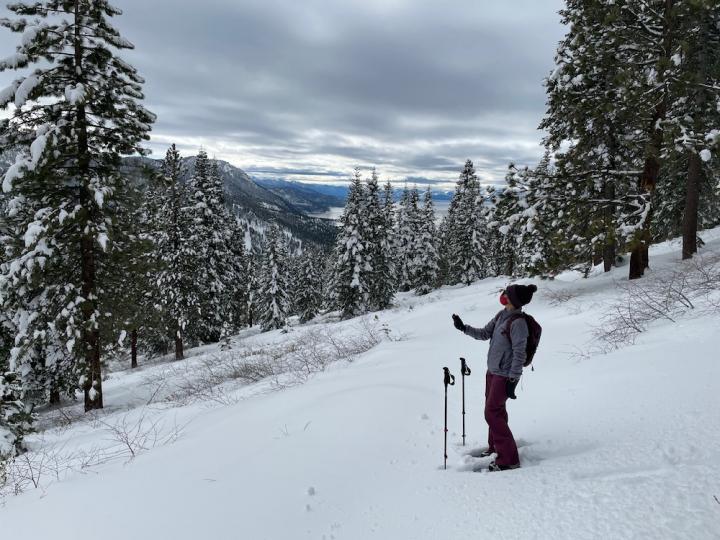Tahoe Rain or Snow weather spotters help reduce inaccuracies in estimating precipitation in the Sierra Nevada

Credit: Desert Research Institute
Reno, Nev. (Feb. 22, 2021)- Normally, we think of the freezing point of water as 32°F – but in the world of weather forecasting and hydrologic prediction, that isn’t always the case. In the Lake Tahoe region of the Sierra Nevada, the shift from snow to rain during winter storms may actually occur at temperatures closer to 39.5°F, according to new research from the Desert Research Institute (DRI), Lynker Technologies, and citizen scientists from the Tahoe Rain or Snow project
The new paper, which published this month in Frontiers in Earth Science, used data collected by 200 volunteer weather spotters to identify the temperature cutoff between rain and snow in winter storms that occurred during the 2020 season. Their results have implications for the accuracy of water resources management, weather forecasting, and more.
“Scientists use a temperature threshold to determine where and when a storm will transition from rain to snow, but if that threshold is off, it can affect our predictions of flooding, snow accumulation, and even avalanche formation,” said Keith Jennings, Ph.D., Water Resources Scientist at Lynker Technologies and one of the lead authors on the study.
Previous studies have found that thresholds used are particularly problematic in the Sierra Nevada, where a significant proportion of winter precipitation falls near 32°F. When the temperature is near freezing, weather forecasts and hydrologic models have difficulty correctly predicting whether it will be raining or snowing.
Tahoe Rain or Snow was launched in 2019 to take on the challenge of enhancing the prediction of snow accumulation and rainfall that may lead to flooding by making real-time observations of winter weather. The team is comprised of two scientists, one education specialist, and about 200 volunteer weather spotters from the Lake Tahoe and western slope regions of the Sierra Nevada and Truckee Meadows.
“Tahoe Rain or Snow harnesses the power of hundreds of local volunteers. The real-time observations that they share with scientists add an incredible amount of value to the study of hydrology and clarify crucial gaps left by weather models,” said Meghan Collins, MS, Education Program Manager for DRI and another lead author on the paper.
In 2020, these citizen scientists submitted over 1,000 timestamped, geotagged observations of precipitation phase through the Citizen Science Tahoe mobile phone app. Ground-based observations submitted by the Tahoe Rain or Snow team in 2020 showed that a much warmer temperature threshold of 39.5°F for splitting precipitation into rain and snow may be more accurate for our mountain region. In contrast, a 32°F rain-snow temperature threshold would have vastly overpredicted rainfall, leading to pronounced underestimates of snow accumulation. Such model errors can lead to issues in water resources management, travel planning, and avalanche risk prediction.
“Tahoe Rain or Snow citizen scientists across our region open a door to improve our understanding of winter storms”, said Monica Arienzo, Ph.D., Assistant Research Professor of Hydrology at DRI and another lead author on the paper. “Growing our team of volunteer scientists is important given that climate change is causing the proportion of precipitation falling as snow to decrease, and they help enhance the predictions of precipitation that we rely on in the Sierra Nevada and Truckee Meadows.”
Tahoe Rain or Snow is continuing in 2021. To join, text WINTER to 877-909-0798. You will find out how to download the Citizen Science Tahoe app and receive alerts as to good times to send weather observations. Tahoe Rain or Snow particularly needs observations from sparsely populated, remote, or backcountry areas of the Sierra Nevada.
###
More information:
For more information on the Tahoe Rain or Snow project, please visit: https:/
Media Contact
Kelsey Fitzgerald
[email protected]
Original Source
https:/
Related Journal Article
http://dx.




